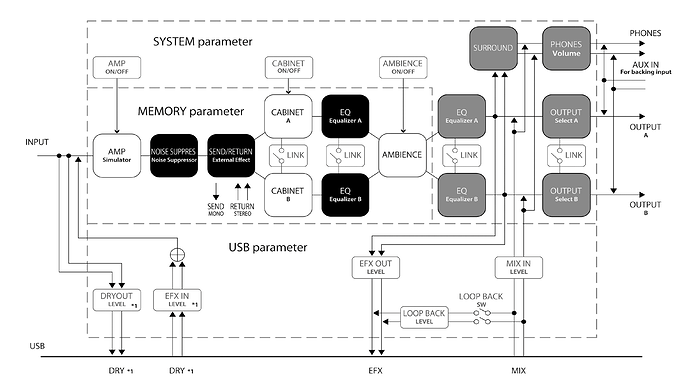You made a good point though. Being able to load IRs is a nice thing to have, either for plugins or cab sims on pedals.
yeah it makes a whole lot of difference. I’d say it’s mandatory, unless you have already done your path making your tone beside IRs
although it’s not really marketed as a frfr cab, i have read in a bunch of places that phil jones cabs are and that’s what i play (dual C4s). they do market that you can use any instrument or vocals through it which sure sounds like frfr to me. i run my helix stomp through it, with 2 harley benton 300B bass heads in stereo.
Yeah it all depends on the preamp. AFAIK all class-D amps should have a pretty flat response, and the question is what the preamp does; some (like Fender) put in a mid scoop when set flat, others (like Ampeg and G-K) add other characteristic tonal color; etc.
If you have a transparent preamp in front of a class D amp it should essentially be flat.
i won’t disagree with you as i think this premise is correct. howevs, unless you are using headphones, in a home situation you are going to be using some kind of amp/speaker setup anyways (usually monitors). and they probably won’t be capable of punch you in the chest unless you have really nice ones, so that’s one thing for amps (and i hate wearing headphones). and there are a lot of places that just aren’t setup to run a di out to front of house (hell, 75% of the scuzzy dive places i like to go to aren’t) so you would need an amp for those.
Definitely - though for those I would still go preamp into PAs. A couple thousand watts of PA speaker is surprisingly inexpensive and portable.
Something like a Quad Cortex into a pair of PA’s is really tempting. You could run amps and cabs for a bass and a pair of guitars, and hve a channel left over for keys or vocals. All carryable by two people.
Could do the same with a small mixer and pedals too for even cheaper.
For home, I like monitors and phones myself, but I live in a place where even a 25W amp is overkill.
it’s not something directly related to the Class D I must say. but yeah, not false ![]()
I was going to call out “all power stages” but realized it probably wasn’t entirely true for class A and B
actually the class is not much important when speaking about the flat response thing (well, Class A may be a bit difficult there …). You just want something transparent. Class AB and Class D will deliver.
Boss IR-200 is interesting, it also has amp sims
Darkglass Element has good IR’s too. Think Mooer has a dedicated IR pedal, not sure how good that one sounds.
I’d be more impressed if for running FRFR they let you sweep the speaker you are using and reverse it’s color out of the system before painting a new one on. Since it’s virtual, they should be able to allow stacked combos too.
Looking at the schema of the Boss IR-200 I see you can have two different channels, which you can also link for stereo. I have no clue what you can do with the software. So at least you can have a clean and dirt channel and separate EQ, blend/mix controls.
Do you know of any other good contenders @DaveT ? If we are talking about actually editing the IR you probably need something advanced like a Kemper profiler. Afaik you have different type of IR’s too. Or am I misunderstanding you? I thought a IR is basically a recorded .wav file.
it’s more some kind of map of dynamic response of the device, depending on the input signal : Impulse response - Wikipedia
There’s the Fearless/Fearful cabs out there. Combination of 12” or 15” woofers, 6” mid drivers, and tweeter for a FRFR cabinet capable of incredible loudness and accuracy.
Barefaced speakers also have FRFR options in their 12” cabs.
Right now I just use my Kali LP-6 V2 monitors at the computer or Presonus Eris E8s at the Jam Station™️
I have a little Phil Jones BG-75 Double Four combo amp. Its 35W per side and dual 4” speakers can vibrate the walls if I want it to.
I’m willing to bet you can do that in some of the more expensive units, i.e. Kemper or Quad Cortex. It totally makes sense. Basically the ability to have a subtractive IR filter.
I glanced at the Kemper manual and it didn’t seem to do it. It seems more geared toward recording or making a PA feed with the sim and has a local “monitor” out to feed the stage cabinet. It’s nothing I need, but seems useful if wanting to use cab sims on FRFR.
I don’t know of any. I’m imagining products again.
An IR can possibly be generated from a recorded .wav file. Some test signal needs to be sent to the device to see how it behaves. For getting the IR of a room, we pop a balloon or fire a starter pistol and record the result. It still takes some processing after that.
IR files actually can be in the wav format but it’s not a typical wav file you play back; it’s an instantaneous spectrum across the speaker frequency range.
Yes, good clarification. I didn’t say that quite right.
